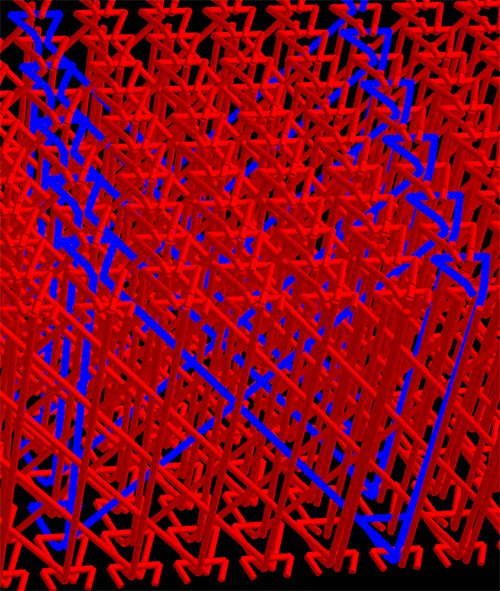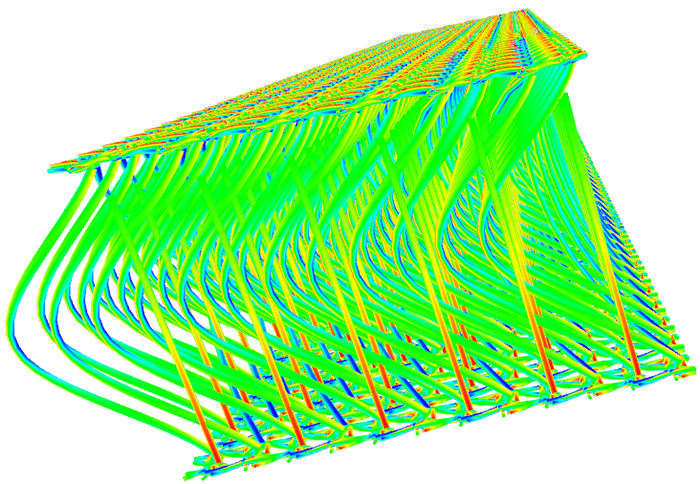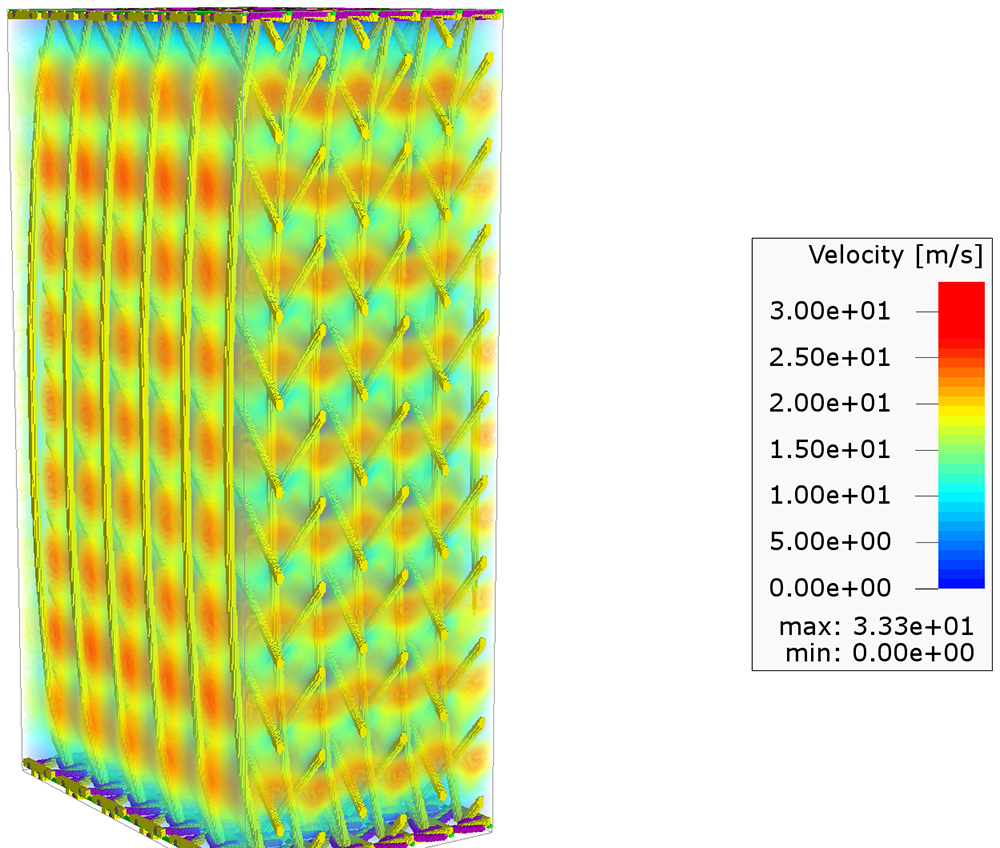Challenge Coefficients of Friction between Yarn Types
While the elongation properties of the individual fibers can be quite easily determined experimentally, determining the coefficients of friction between the various fiber types requires a much greater effort. The necessary fiber parameters are usually defined by suitably equipped experimental textile institutes and then provided to ITWM.
In this case, the main application area is especially in technical and medical textiles, which must strictly adhere to certain performance specifications. Some examples include: bandages that are supposed to exert pressure when in contact with the patient’s skin or, perhaps, there is a need to find a material specifically made to provide maximum protection, for example, either for a bullet proof vest or for work clothes like cut protective trousers.
Generally, the work of the textile group does not end with a specific textile product, rather more in the advanced development of appropriate simulation tools that the customer then uses to run various simulations – with changing materials or geometric parameters. Besides the evaluation of a specific textile design by simulation, the tools also enable the optimization of the performance characteristics for different design variants.



